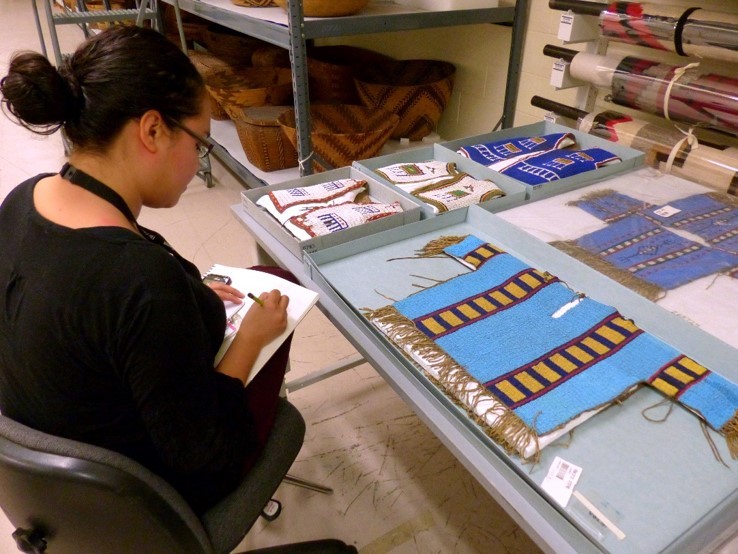Guidelines in Action: Chicago’s Field Museum Improves Community Visits

Monica Rickert-Bolter (Potawatomi/African-American) visits the North American collections at the Field Museum in January 2018 to view Lakota children’s garments and toys in preparation for illustrating a Native-authored children’s book. Photo courtesy the Field Museum.
In 2017 the Indian Arts Research Center at the School for Advanced Research first published a new resource known as the Guidelines for Collaboration. Drawing from decades of case studies and three years of focused work with Native and non-Native museum professionals, cultural leaders, and artists, the Guidelines provide a series of methods for how museums and source communities can work together across two-way learning opportunities. Today the Guidelines are used in classrooms, museums, cultural institutions, tribal communities, and elsewhere.
Guidelines in Action is a series of guest posts highlighting stories from the field.
Guest post by Jamie Lewis and Jamie Kelly
We acknowledge that collaboration is critical as we continue to work with communities on how to best care for their heritage.
Jamie Kelly, Head of Anthropology Collections; Collections Manager, Field Museum’s Gantz Family Collections Center.
The Field Museum has taken strides towards more collaborative approaches to collections management practices, including collections care and access. When the Indian Arts Research Center at the School for Advanced Research introduced the Guidelines for Collaboration, many of us at the Field Museum were excited to see a document like this published and eager to read them. In addition to the feedback we have received from descendant communities, the Guidelines informed how we can improve our hospitality when community members visit collections at the Museum. For example, we now provide community visitors with a 2-page informational packet before they visit collections so they know what to expect during a visit. We also make sure they have space and time to prepare, reflect, or cleanse after they arrive, as these visits can be an overwhelming experience for some. We have also taken steps to reduce some of the bureaucratic obstacles to accessing collections, such as simplifying our Visit Request Form, which is used to record visitors to collections. This form was developed decades ago for visiting academic researchers and was seven pages long with policy statements about object handling and early hazardous pesticide use on collections. A new form is being developed that is considerably shorter and tailored for community visitors.
Field Museum Anthropological Collections visit request form with improved language and new references to community affiliations.
Many of our relationships with communities have been more consultative in nature. Over time these relationships are deepening and becoming more collaborative, benefiting community members, the collections, and Museum staff. We acknowledge that collaboration is critical as we continue to work with communities on how to best care for their heritage. We strive to improve our approach and practices to engage communities in collaborative care and continue to seek out ways to provide a sustainable commitment of time and resources to build and foster relationships. We commend SAR for spearheading this movement toward improving museum-community relationships.
Learn more about the SAR Guidelines for Collaboration here.
SIGN UP FOR THE SAR MONTHLY NEWSLETTER and stay up to date on our projects and programs.


